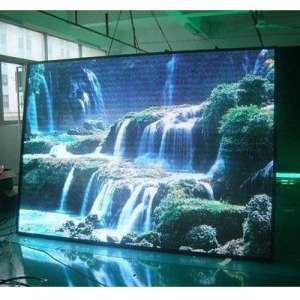Are you looking to embrace the image wall solution? Choosing the type of display to use can be a problem that you must solve before you embark on the project. Nowadays, there are many display technologies on the market with everyone trying to make their mark!
LCD and LED are two technologies that have positively marked the world of display. A comprehensive review of the features and benefits of these two technologies could help video wall buyers make the choice that best suits their needs.
What is LCD, LED
LCD is synonymous with LCD, while LED means the display of the light-emitting diode. From a technical point of view, one could argue that the LED display is an LCD because it is built on LCD technology with LED backlighting.
The basic technology is the same as both types of screens have two layers of polarized glass through which liquid crystals block and transmit light. Both technologies offer optimal connectivity to many multimedia devices and external games, as well as superb image and sound quality.
Comparison between the two technologies
Since the emergence of LCD and LED displays, stakeholders have always tried to make the difference to know which of the two technologies offers the best performance and the best possible result at the best price.
While it may seem obvious that LED would be the obvious choice because it is a newer technology, a large number of consumers are still of the opinion that LCD display offers are best suited to their specific needs.
Model
Both LCDs and LEDs require a light source to illuminate its pixels. This requirement causes the fundamental difference in their designs – the LCD technology is based on a set of fluorescent tubes for lighting, while for the LED display, the tubes are replaced by a set of light-emitting diodes.
These light-emitting diodes are more energy-efficient compared to the fluorescent tube option used in the LCD design, but it may be worth pointing out that the former compensates for this in its cost because LED displays are much more expensive than their counterparts.
Colour accuracy
In addition, LED displays may have slightly better colour accuracy than their LCD counterparts. They benefit from an integrated wheel of distinct RGB colour lights to produce more realistic, clearer colour output. Although there is not much difference between the colour accuracy of the LED and the LCD, it would be a disservice for readers to deny that LED displays have high colour accuracy.
Angle of vision
As far as the two technologies are concerned, there is not much between the maximum angles at which they can be seen. This depends on the type of LED Video wall panels used by the manufacturer and the type of glass mounted in front of the LCD panel. A thicker, higher quality glass panel should generally produce a better viewing angle.
Video wall bracket
For video wall and digital display solutions, LCDs seem to be the preferred technology because they are less susceptible to burn-in, a problem often associated with LED screens. In addition, consumers who install a high-end home theatre on their PC can also opt for LCD screens to avoid the same thing. However, for displays where a zero-bezel appearance is desired, LED is clearly the preferred option as they come in thinner glasses but the ultra-narrow bezel screen design is now gaining more popularity for walls. Visual and in the great competition creates the smallest seams.
Conclusion
While it may seem that LED displays have significant gains over LCD screens, the type of technology you choose depends on your needs, applications, and budget. The price is mainly the biggest difference between these two technologies. The LCD, which is now considered an older technology compared to its LED counterpart, costs much less than the LED.











